Porter-Cable PCE345 Handleiding
Porter-Cable
Zaagmachine
PCE345
Bekijk gratis de handleiding van Porter-Cable PCE345 (28 pagina’s), behorend tot de categorie Zaagmachine. Deze gids werd als nuttig beoordeeld door 57 mensen en kreeg gemiddeld 4.5 sterren uit 29 reviews. Heb je een vraag over Porter-Cable PCE345 of wil je andere gebruikers van dit product iets vragen? Stel een vraag
Pagina 1/28

CATALOG NUMBER
N° DE CATALOGUE
CATÁLOGO N°
PCE345
Instruction manual
Manuel d’instructions
Manual de’instrucciones
www.portercable.com
INSTRUCTIVO DE OPERACIÓN, CENTROS DE
SERVICIO Y PÓLIZA DE GARANTÍA.
ADVERTENCIA: LÉASE ESTE INSTRUCTIVO
ANTES DE USAR EL PRODUCTO.
Thank you for choosing PORTER-CABLE! To register your new product, go to:
www.portercable.com/ServiceAndSupport/ProductRegistration.aspx
Merci d’avoir choisi PORTER-CABLE! Consulter le site Web www.portercable.
com/ServiceAndSupport/ProductRegistration.aspx pour enregistrer votre
nouveau produit.
Gracias por elegir PORTER-CABLE usted! Para registrar su nuevo producto,
visite: www.portercable.com / ServiceAndSupport / ProductRegistration.aspx
6A VS Orbital Jig Saw
Scie sauteuse orbitale à vitesse variable de 6A
Sierra caladora de acción orbital y
velocidad variable de 6A

2
SAFETY GUIDELINES - DEFINITIONS
It is important for you to read and understand this manual. The information it contains
relates to protecting The symbols YOUR SAFETY and PREVENTING PROBLEMS.
below are used to help you recognize this information.
DANGER: Indicates an imminently hazardous situation which, if not avoided,
will result in death or serious injury.
WARNING: Indicates a potentially hazardous situation which, if not avoided,
could result in death or serious injury.
CAUTION: Indicates a potentially haz ard ous situation which, if not avoided,
may result in minor or mod er ate injury.
NOTICE: Used without the safety alert symbol indicates potentially hazardous
situation which, if not avoided, may result in property damage.
GENERAL POWER TOOL SAFETY WARNINGS
WARNING: Read all safety warnings and all instructions. Failure to follow the
warnings and instructions may result in electric shock, fire and/or serious injury.
SAVE ALL WARNINGS AND INSTRUCTIONS FOR FUTURE REFERENCE
The term “power tool” in the warnings refers to your mains-operated (corded) power
tool or battery-operated (cordless) power tool.
1) WORK AREA SAFETY
a) Keep work area clean and well lit. Cluttered or dark areas invite accidents.
b)
Do not operate power tools in explosive atmospheres, such as in the presence of
flammable liquids, gases or dust. Power tools create sparks which may ignite the dust or fumes.
c) Keep children and bystanders away while operating a power tool.
Distractions can cause you to lose control.
2) ELECTRICAL SAFETY
a) Power tool plugs must match the outlet. Never modify the plug in any
way. Do not use any adapter plugs with earthed (grounded) power tools.
Unmodified plugs and matching outlets will reduce risk of electric shock.
b) Avoid body contact with earthed or grounded surfaces such as pipes, radiators,
ranges and refrigerators. There is an increased risk of electric shock if your body is
earthed or grounded.
c) Do not expose power tools to rain or wet conditions. Water entering a power
tool will increase the risk of electric shock.
d) Do not abuse the cord. Never use the cord for carrying, pulling or
unplugging the power tool. Keep cord away from heat, oil, sharp edges or
moving parts. Damaged or entangled cords increase the risk of electric shock.
e)
When operating a power tool outdoors, use an extension cord suitable for
outdoor use. Use of a cord suitable for outdoor use reduces the risk of electric shock.
f)
If operating a power tool in a damp location is unavoidable, use a ground fault circuit
interrupter (GFCI) protected supply. Use of a GFCI reduces the risk of electric shock.
3) PERSONAL SAFETY
a) Stay alert, watch what you are doing and use common sense when
operating a power tool. Do not use a power tool while you are tired or under
the influence of drugs, alcohol or medication. A moment of inattention while
operating power tools may result in serious personal injury.
b) Use personal protective equipment. Always wear eye protection. Protective
equipment such as dust mask, nonskid safety shoes, hard hat, or hearing
protection used for appropriate conditions will reduce personal injuries.
c) Prevent unintentional starting. Ensure the switch is in the off position before
connecting to power source and/ or battery pack, picking up or carrying the
tool. Carrying power tools with your finger on the switch or energizing power tools
that have the switch on invites accidents.
d)
Remove any adjusting key or wrench before turning the power tool on. A wrench
or a key left attached to a rotating part of the power tool may result in personal injury.
e) Do not overreach. Keep proper footing and balance at all times. This enables
better control of the power tool in unexpected situations.

3
f)
Dress properly. Do not wear loose clothing or jewelry. Keep your hair, clothing and gloves
away from moving parts. Loose clothes, jewelry or long hair can be caught in moving parts.
g)
If devices are provided for the connection of dust extraction and collection facilities, ensure
these are connected and properly used. Use of dust collection can reduce dust-related hazards.
4) POWER TOOL USE AND CARE
a)
Do not force the power tool. Use the correct power tool for your application. The
correct power tool will do the job better and safer at the rate for which it was designed.
b) Do not use the power tool if the switch does not turn it on and off. Any power
tool that cannot be controlled with the switch is dangerous and must be repaired.
c) Disconnect the plug from the power source and/or the battery pack from the
power tool before making any adjustments, changing accessories, or storing
power tools. Such preventive safety measures reduce the risk of starting the
power tool accidentally.
d) Store idle power tools out of the reach of children and do not allow persons
unfamiliar with the power tool or these instructions to operate the power
tool. Power tools are dangerous in the hands of untrained users.
e) Maintain power tools. Check for misalignment or binding of moving parts, breakage
of parts and any other condition that may affect the power tool’s operation. If
damaged, have the power tool repaired before use. Many accidents are caused by
poorly maintained power tools.
f) Keep cutting tools sharp and clean. Properly maintained cutting tools with sharp
cutting edges are less likely to bind and are easier to control.
g) Use the power tool, accessories and tool bits, etc. in accordance with these
instructions, taking into account the working conditions and the work to be
performed. Use of the power tool for operations different from those intended could
result in a hazardous situation.
5) SERVICE
a)
Have your power tool serviced by a qualified repair person using only identical
replacement parts. This will ensure that the safety of the power tool is maintained.
JIG SAW SAFETY WARNINGS
• Hold power tool by insulated gripping surfaces, when performing an operation
where the cutting accessory may contact hidden wiring. Cutting accessory
contacting a “live” wire may make exposed metal parts of the power tool “live” and could
give the operator an electric shock.
• Use clamps or another practical way to secure and support the workpiece to a
stable platform. Holding the work by hand or against your body leaves it unstable
and may lead to loss of control.
•Keep hands away from cutting area. Never reach underneath the material for any
reason. Hold front of saw by grasping the contoured gripping area. Do not insert
fingers or thumb into the vicinity of the reciprocating blade and blade clamp. Do not
stabilize the saw by gripping the shoe.
• Keep blades sharp. Dull blades may cause the saw to swerve or stall under pressure.
• Use extra caution when cutting overhead and pay particular attention to overhead
wires which may be hidden from view. Anticipate the path of falling branches and
debris ahead of time.
• When cutting pipe or conduit ensure that they are free from water, electrical
wiring, etc.
WARNING: Some dust created by power sanding, sawing, grinding, drilling,
and other construction activities contains chemicals known to cause cancer, birth
defects or other reproductive harm. Some examples of these chemicals are:
•leadfromlead-basedpaints,
•crystallinesilicafrombricksandcementandothermasonryproducts,and
•arsenicandchromiumfromchemically-treatedlumber(CCA).
Yourriskfromtheseexposuresvaries,dependingonhowoftenyoudothistypeof
work.Toreduceyourexposuretothesechemicals:workinawellventilatedarea,and
workwithapprovedsafetyequipment,suchasthosedustmasksthatarespecially
designed to filter out microscopic particles.
• Avoid prolonged contact with dust from power sanding, sawing, grinding,
drilling, and other construction activities. Wear protective clothing and wash
exposed areas with soap and water.Allowingdusttogetintoyourmouth,eyes,orlay
ontheskinmaypromoteabsorptionofharmfulchemicals.
Product specificaties
| Merk: | Porter-Cable |
| Categorie: | Zaagmachine |
| Model: | PCE345 |
Heb je hulp nodig?
Als je hulp nodig hebt met Porter-Cable PCE345 stel dan hieronder een vraag en andere gebruikers zullen je antwoorden
Handleiding Zaagmachine Porter-Cable

18 December 2023

15 Augustus 2023

19 April 2023

3 April 2023

19 Maart 2023

8 Maart 2023

8 Maart 2023

8 Maart 2023

7 Maart 2023

26 Februari 2023
Handleiding Zaagmachine
- DeWalt
- Pattfield
- Varo
- Skil
- Powerfix
- Vonroc
- Stihl
- MSW
- Silverline
- MyTool
- TAURUS Titanium
- Echo
- REMS
- Black Decker
- Könner & Söhnen
Nieuwste handleidingen voor Zaagmachine
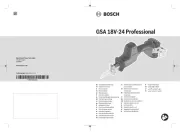
15 September 2025
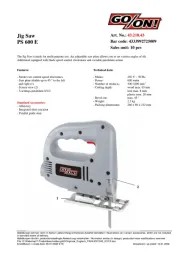
7 September 2025
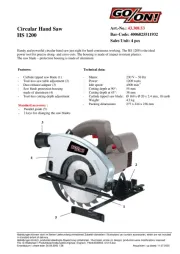
7 September 2025
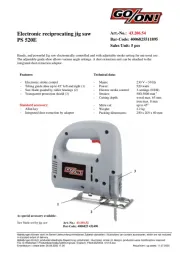
7 September 2025
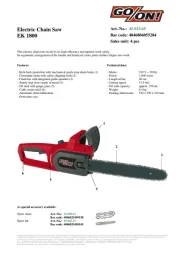
7 September 2025
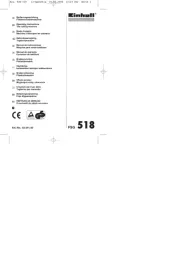
2 September 2025
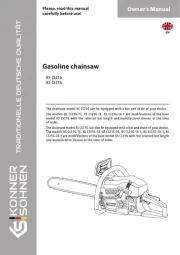
2 September 2025
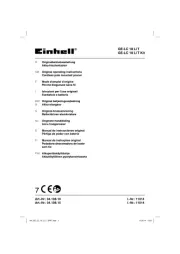
2 September 2025
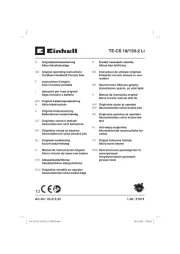
2 September 2025
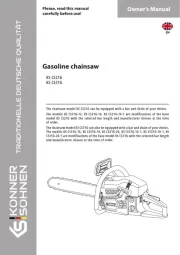
2 September 2025